Predicting the Weather
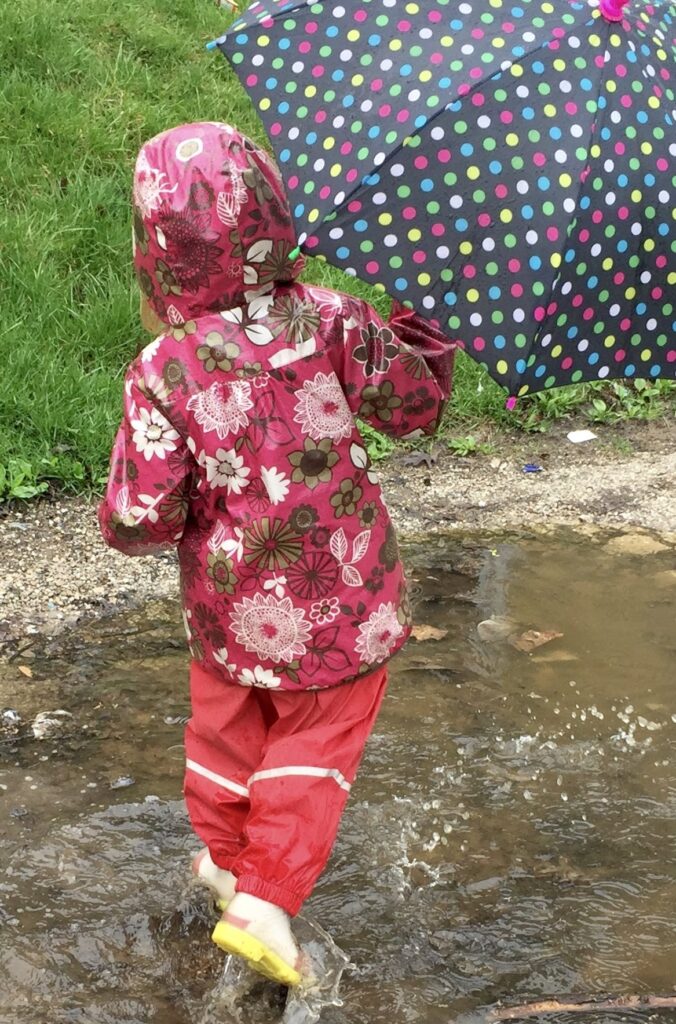
“Rain before seven, clear by eleven!” exclaims Pierre as he bounces through the door with his ever-present smile and positive attitude. “My mom told me it was raining before I got up this morning. But she also said we will be outside by lunchtime!”
“Is that true?” asks Michael, who is standing nearby.
“It usually is!” I answer.
“Does your mom have any more great weather rhymes that your family uses?” I ask Pierre.
“Oh she has some,” says Pierre. “But my grandpa has a million of them!”
Before we had weather at our fingertips with satellite imagery and weather warnings on our smartphones, people often forecasted the weather by observing the sky, animals and nature.

“’Red at night, sailor’s delight.’ My grandpa always says that one!” Pierre adds with a laugh.
“Does he also say, ‘Red in the morning, sailors take warning?'” I ask.
“No, he doesn’t know that one,” Pierre replies as he heads off to play with his friends.
I often forget how easy it is to “teach” science to young children. When it comes to learning about science, mother nature is the best teacher. If you are itching for a reason to head outside and enjoy the spring sunshine, nothing beats scientific investigations in the natural world.
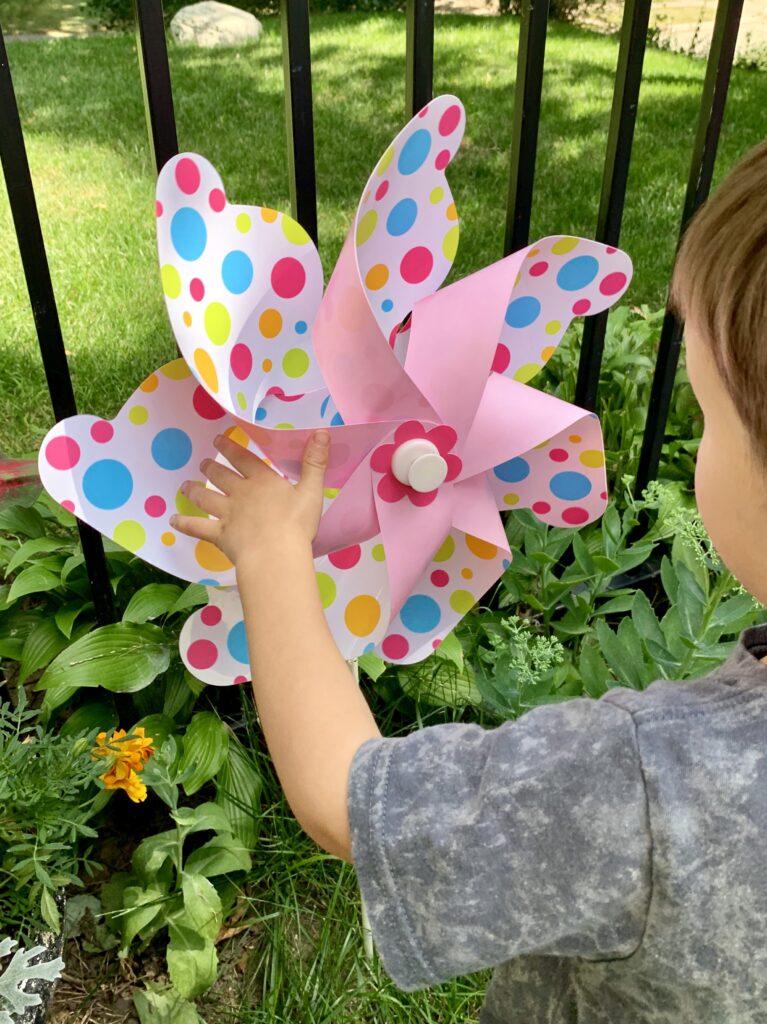
When children are learning about the weather, we need to keep their investigations simple and developmentally appropriate. Set up an outdoor weather station with a few weather instruments to encourage your young explorers to make daily observations.
You may choose to keep it fairly simple with a thermometer to record the temperature and a rain gauge to measure precipitation, but there are a number of other weather-related tools that you can add to your outdoor spaces.
If you are working with a younger group, encourage the children to talk about their observations, rather than recording what they see on paper.
There will always be time to take the learning to a deeper level once the children have mastered the basics. For instance, when your early learners are spending long periods of time playing with pinwheels, they are investigating the direction and speed of the wind. By adding windsocks to your outdoor area or making kites out of plastic or paper bags, you can extend the investigation.
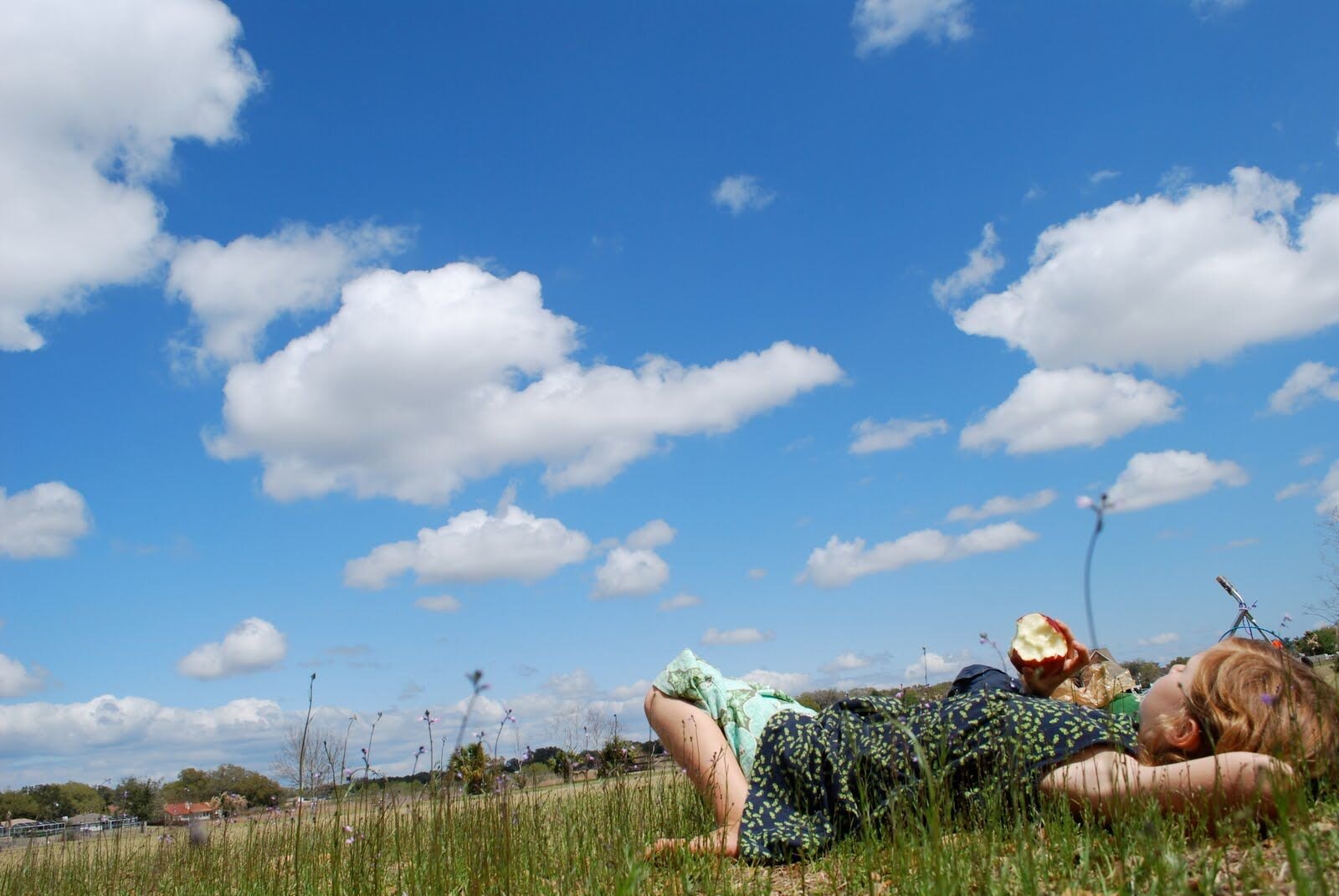
Don’t forget to look up! Kids love observing the clouds. Simply put, there are two main kinds: puffy clouds (cumulus) and flat, layered ones (stratus). Cloud observations offer another opportunity to introduce weather rhymes and make predictions.
You’ll find a wealth of weather-related rhymes and lore online. Check out homestead.org for examples like these:
- “A round-topped cloud with a ‘flatted’ base, carries rainfall in its face.”
- “When clouds appear like towers, the Earth is refreshed by showers.”
Keep an eye on the smaller cumulus clouds, especially in the morning or early afternoon. When you see large, white clouds that look like castles or cauliflower in the sky, there is probably a lot of dynamic weather going on inside. Innocent clouds look like billowy cotton, not towers. If the clouds start to swell up and take on a gray tint, they’re likely turning into thunderstorms.
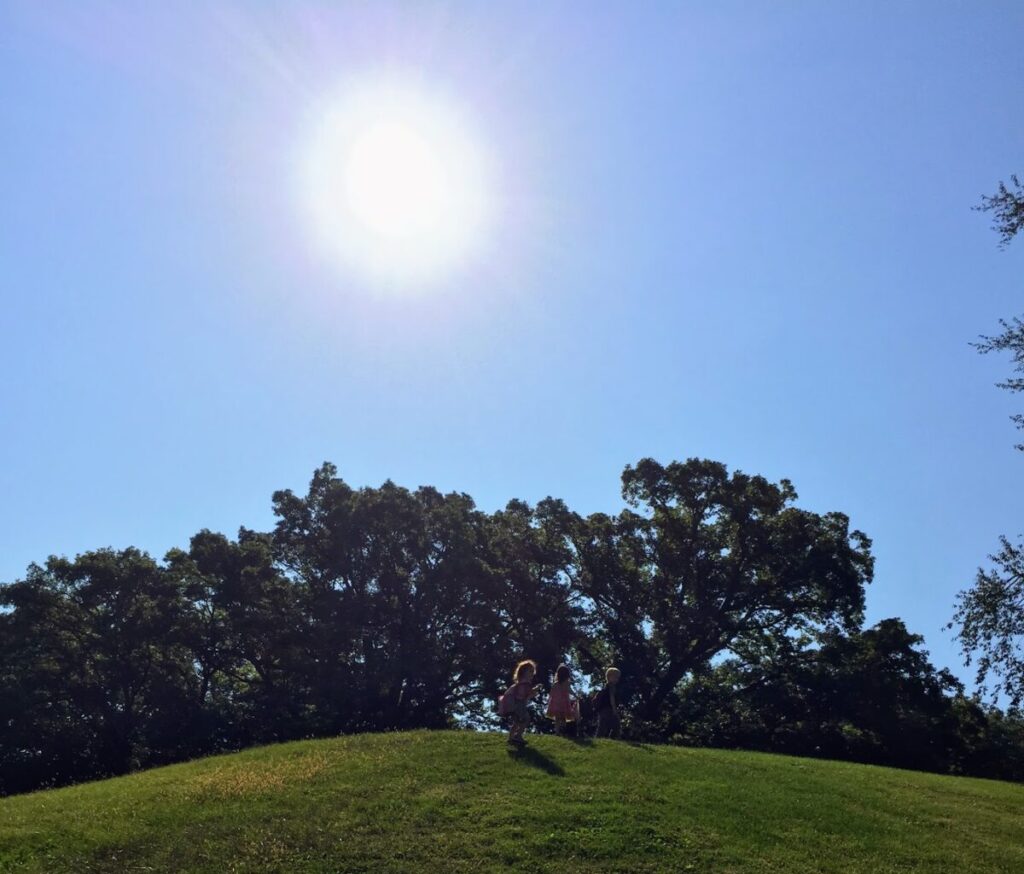
“Circle around the sun or moon, rain or snow is coming soon.” A haze around the moon is caused by moisture in the air and generally means rain in the next couple of days.
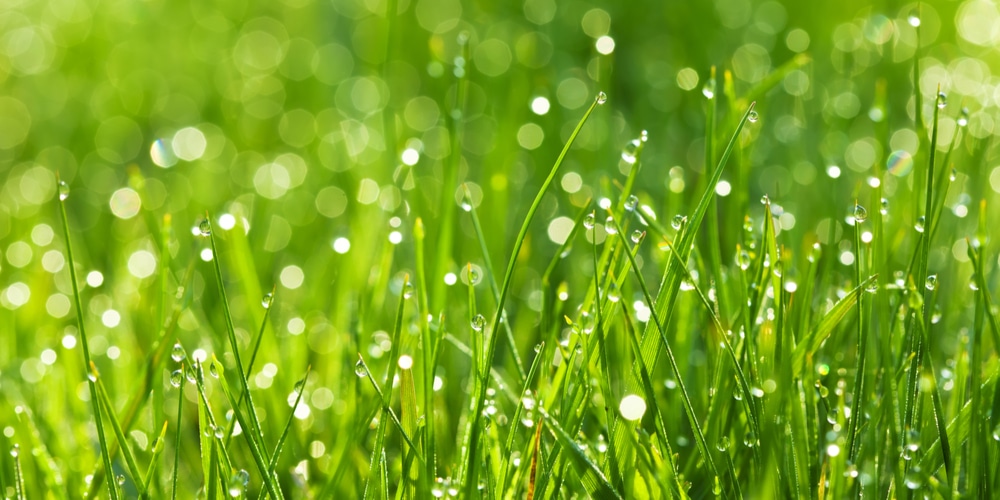
“Frost or dew in the morning light, see no rain before the night.” Frost and dew usually form after a clear night when there are no clouds to keep the ground warm. If clear skies remain for the rest of the day, rain is unlikely.
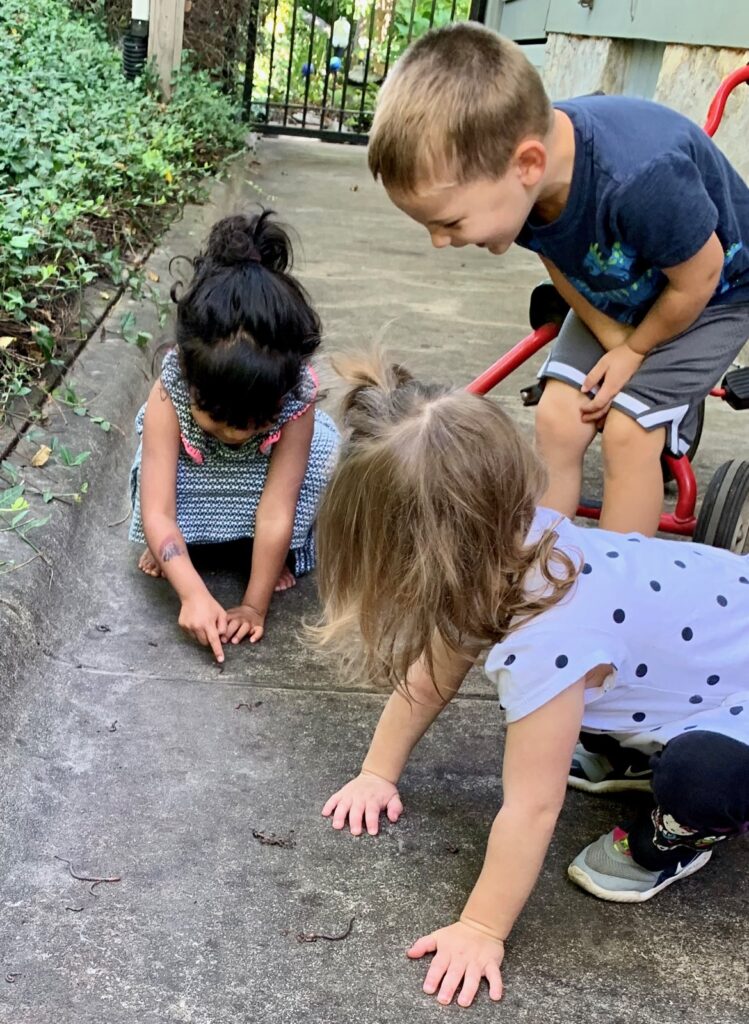
Children will have a deeper understanding of weather concepts if they are able to experience weather variations in an outdoor environment. The sky, wind and clouds offer clues about future weather conditions that even young children can learn.
You won’t need a Weather Bear at circle time when you’ve got curious minds and folklore to lead your curriculum!
By 11:00 a.m. on this particular day—just as Pierre’s mother predicted—we are outside picking up worms and jumping in puddles. Choose a few simple rhymes and make a point of observing the wind, sky and clouds, as well as the puddles and worms that follow the rain, whenever your young learners are outside. What better way to learn about the scientific principles that govern the natural world?
I love this, because it involves the childrens every day experiences! Just being more attuned to what is going on outside makes for a fantastic experience for the children.
Definitely a great way to show change in early childhood setting.
A weather chart in the classroom is a great way to implement changes in the weather to the children.
We have not done a weather module at our center I’m encouraging my directors to add one as a theme next year
Our center does not have a weather related theme for pre k I’m encouraging our directors to add one
I love the idea of setting up an outdoor weather station!
These are really good ideas. I do teach about the weather in my class. I try to let the children describe what kind of day we are having in order to help them understand the sun from the rain and cloudy from foggy days.
Would be nice to implement more of the weather in school environment.
It would be fun to have a weather station outside for the kids to predict.
fun
fun activity for the kids
Have a weather station in the classroom would be fun
This is great! I would gather as many items related to these areas and allow the children to experiment with them. We would then write down the children’s ideas and comments.
We need to teach more of this in early classrooms especially now when kids are wanting to be inside all the time playing online games and iPads
Fun activities for the young children
Very nice lessons
Nice ways to predict and graph
Great ideas
fun activity
Awesome ideas
I liked how giving the children a thermometer and rain gauge would teach the children how to read these tools and let them check the finding on a daily basis.
i think this was a great and informative lesson and gave me some new ideas.
great lesson. it covers a well-rounded subject to use in learning centers and everyday curriculum.
I found the weather rhymes interesting and want to check out the homestead.org website.
love the ideas of thermometer and measuring and documeting weather
awesome projects for students to learn about weather
I would love the implement playing with pinwheels they could investigate wind direction and speed of wind. To extend this experience make kites out of paper bags. Great ideas to discuss with children regarding wind and air.
I like the idea of adding weather rhymes and make predictions, And there is a website listed with more.
I love that the kids have pinwheels and could make wind socks to see the direction of the wind. I love the idea of bringing in the weather rhymes to help predict the weather and then see if it was correct.
This is a fun way of demonstrating how water can be affected by air.
Excellent way to introduce basic evaporation theories to young minds
Great lesson
great way to teach weather to young children.
Very cute way to experience weather earth air and water
we have not done a weather module, however I would love to try it.
Love the idea of adding rain gauges and outdoor thermometers to the children’s paly areas
I Love the idea of using Weather Rhymes with the Children! Great idea that I will be implementing in my classroom!
The lesson’s are very interesting
The ideas are very interesting when it comes to earth, water, and air.
i like this and would do this with my kids
I love the whole idea
great weather blog
Great activity I will take my kids for a walk
My kid usually likes songs or things like this so will definitely be using the rhymes 🙂
I love the idea of setting up an indoor weather station!
Such great ways to make weather part of our daily routine!
Thank you for providing the weather rhymes that I can add to my preschool class. I grew up in a country with only 2 seasons. These rhymes will help me, too!
The kids love being outside so they would love this activity
will try with my students
I love learning about the weather in my classroom. Children like to predict the weather and talk about activities that can be done in certain types of weather. We also like to talk about what appropriate clothing we should wear in these weather situations.
Great idea to use with my class
I would love to have a weather center for our kids! I will definitely be asking our director if we can implement this on the playground. I know our kids would love it!
Great Lesson
I love using the rhymes to talk about weather – and the different clouds etc! I also love how you incorporate a rain gauge- I’ve never done that, only talked about what the weather is today! Love the scientific documentation to go along with observation
We observe the weather daily, discuss what they see, and record it on a chart. I would like to add a thermometer and rain gauge outside on our playground for additional learning experiences. Having the children lie down and observe the clouds is also a fun activity leading to weather predictions.